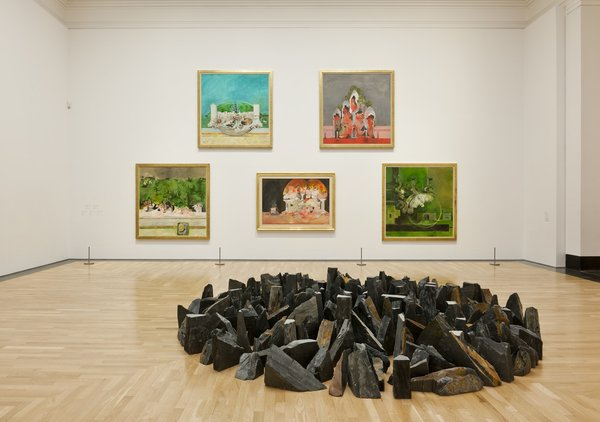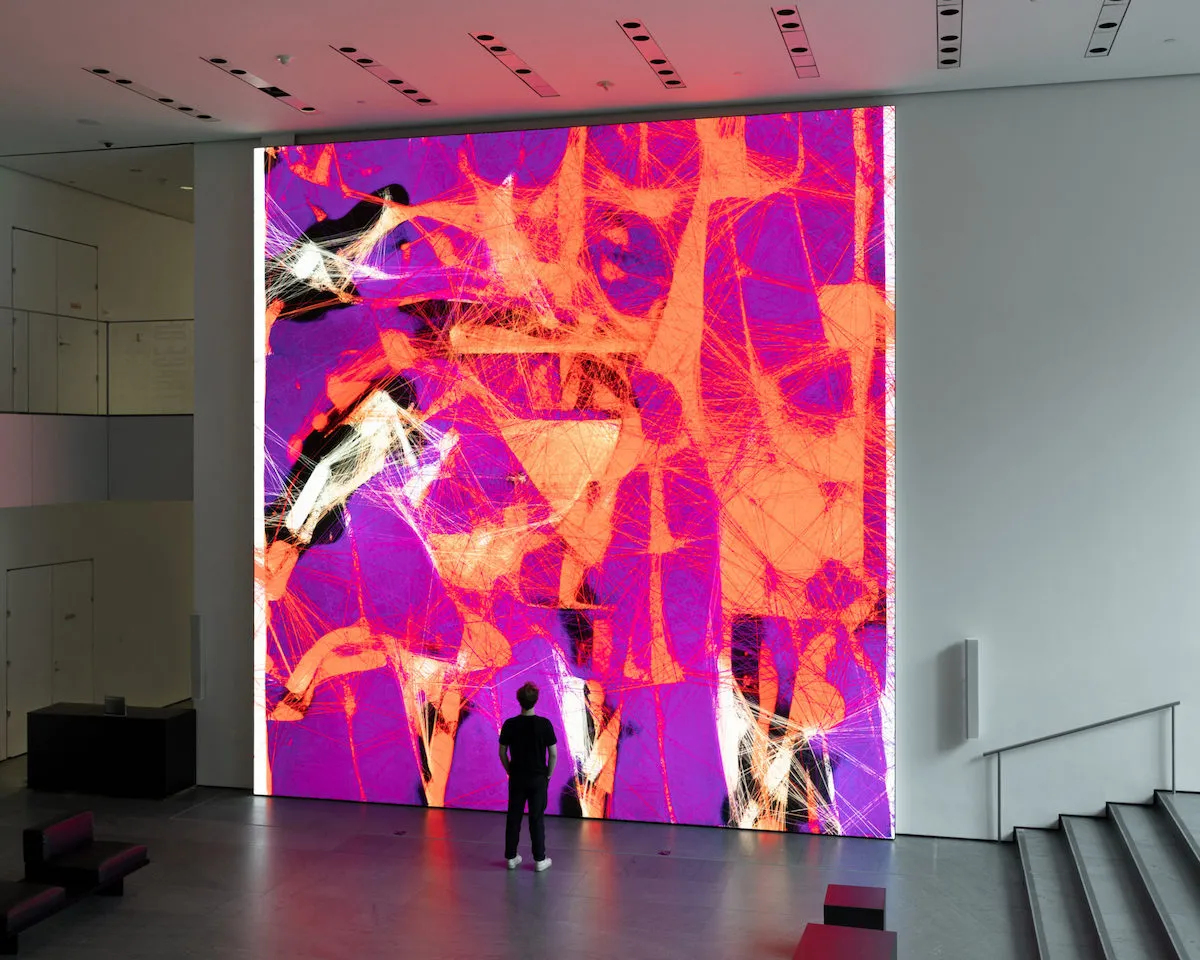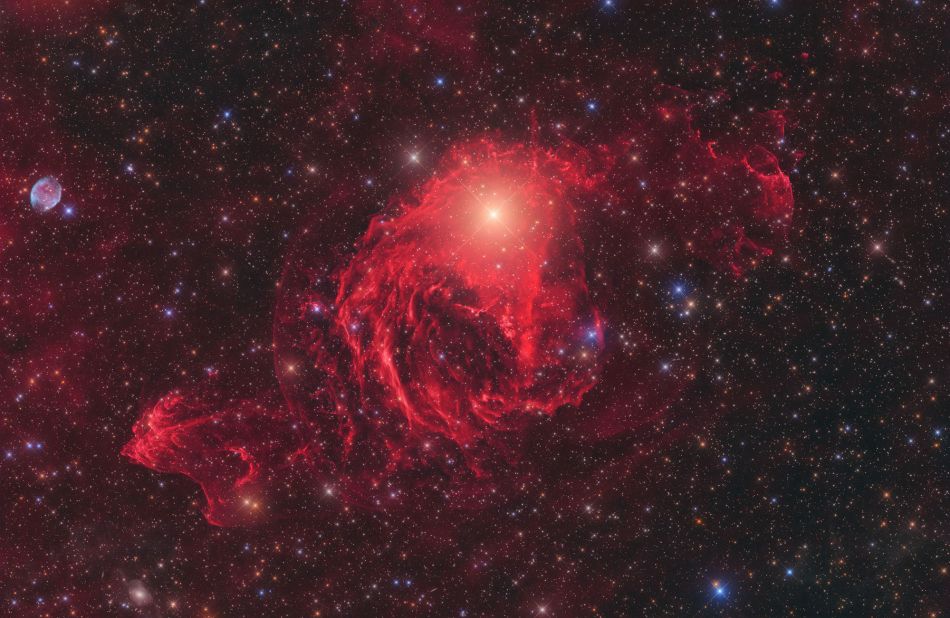At the Museum of Modern Art, Data Serves as Inspiration
Contemporary artists trying to make sense of our emerging cybernetic world have found this ambiguity to be what makes data such an appealing topic. The Museum of Modern Art in New York has hosted a number of shows that demonstrate how artists are examining data and coming to terms with its pervasiveness, complicated dynamics, and inherent contradictions.
Refik Anadol’s “Unsupervised,” which has been on display in the museum’s Gund Lobby for over a year, will remain there until October 29 thanks to a new extension. Anadol’s work has become one of the most well-known pieces of AI art in the world, because to its viral popularity. “Unsupervised” is an attempt to visualise and audibly represent the “mind” of a machine intelligence, trained using public data from the museum’s extensive collection and responding to site-specific elements such as weather, light, and sound. “What would a machine dream about after seeing the collection of The Museum of Modern Art?” is a question posed by the museum. The spectacular landscape of colour and sound that Anadol produces in response to the viewer’s presence is continually writhing and undulating, moving from one picture to the next in an apparently endless stream of mechanical consciousness.
A.I., a source of both intrigue and dread

The article’s widespread appeal is, in many respects, not unexpected. The word “unsupervised” seems designed for the modern technological setting. Many fears and expectations about the potential of big data are sparking last year by programmes like DALL-E, ChatGPT, and Midjourney. As these robots begin to take on tasks that were formerly considered impossible, advocates of new technologies start to boast about their near-limitless potential. Some computer enthusiasts even go so far as to say that we are seeing the entrance of the devil himself.
Anadol capitalises on this conflicting emotion by describing a terrifying future where machines are smarter than humans. This intellect is a technical sublime, a deistic consciousness beyond our comprehension, because of its enormous size and abstracted visual form. As Ben Davis noted in his assessment of the piece for Artnet in January, the “generalised awe at the machine’s superhuman capacity of visual analysis” serves as the piece’s driving force, conjuring up a picture of AI as an incomprehensible transcendent Other.
The Misplaced Obsession with AI
This obsession with AI, however, turns out to be misplace. The complicated and genuine ways in which these computers are formed by. In turn shape, the world around us are obscured by “Unsupervised’s” abstract aesthetic, which ultimately divorces this technology from the understandable arena of human affairs. According to a March article by R.H. Lossin in e-flux, the “spectacular” setting of “Unsupervised” transforms a “militarised” and “environmentally devastating” monitoring equipment “into something pleasing and even soothing.” Even its most radical contributions (art that deals with real issues like racism, sexism, and mortality) are dilut in the process of assimilation, becoming abstract colour swatches with no contextual or political significance.
Ultimately, this “generalised awe” allows Anadol to obfuscate the true stakes of data, which is used in everything from our legal system to our medical treatment, in favour of a hyper-formalist abstraction that appears satisfied to just have us stare in open-mouthed wonder at the power of these instruments. This prevents us from having a more in-depth conversation with this otherworldly machine and instead fosters a toxic form of spectatorial passivity. Instead of helping us better relate to and comprehend these technologies, “Unsupervised” just serves to further drive a wedge between their world and ours.
Learn from Museum of Modern Art: Artist’ Materialisation of Data
However, the Museum of Modern Art features numerous works that are often neglecting that, like “Unsupervised,” deal with these modern technical abstractions without losing touch with reality.
In the continuing “Systems” show, for instance, “Anatomy of an AI System” by Kate Crawford and Vladan Joler breaks out the complex web of resources that goes into producing a single Amazon Echo. While “Unsupervised” portrays artificial intelligence as an inscrutable Other, “Anatomy” strips away this illusion to reveal the technology’s material, tangible foundations, from the raw materials from which it is crafted to the factories and workshops that put it together, all the way to its place in the digital ecosystem. “Anatomy” debunks the myth that artificial intelligence exists in a vacuum, instead illuminating the intricate network of economic, environmental, and social factors upon which it relies.
The “Eve” series by Wangechi Mutu, on display in the museum’s “Search Engines” exhibition, elaborates on these kinds of bodily entanglements. The museum claims that the piece represents the “surreal results of an internet search” for this (in)famous person’s name. Mutu’s works often combine organic components and squishy shapes with cold steel and cybernetic networks, blurring the lines between the technical and the natural. In her works, she demonstrates that data is fleshy, corporeal, and warm-blooded, something that both emerges from. It profoundly impacts our knowledge of our bodies, challenging the concept that data resides in a cold, sterile, transcendent world. Similarly, feminist theorists like Donna Haraway have long argue that questions of technology are inextricably link to questions of “who and what are in the world” (i.e., how we relate to others and what kinds of identities and existences receive privilege).


